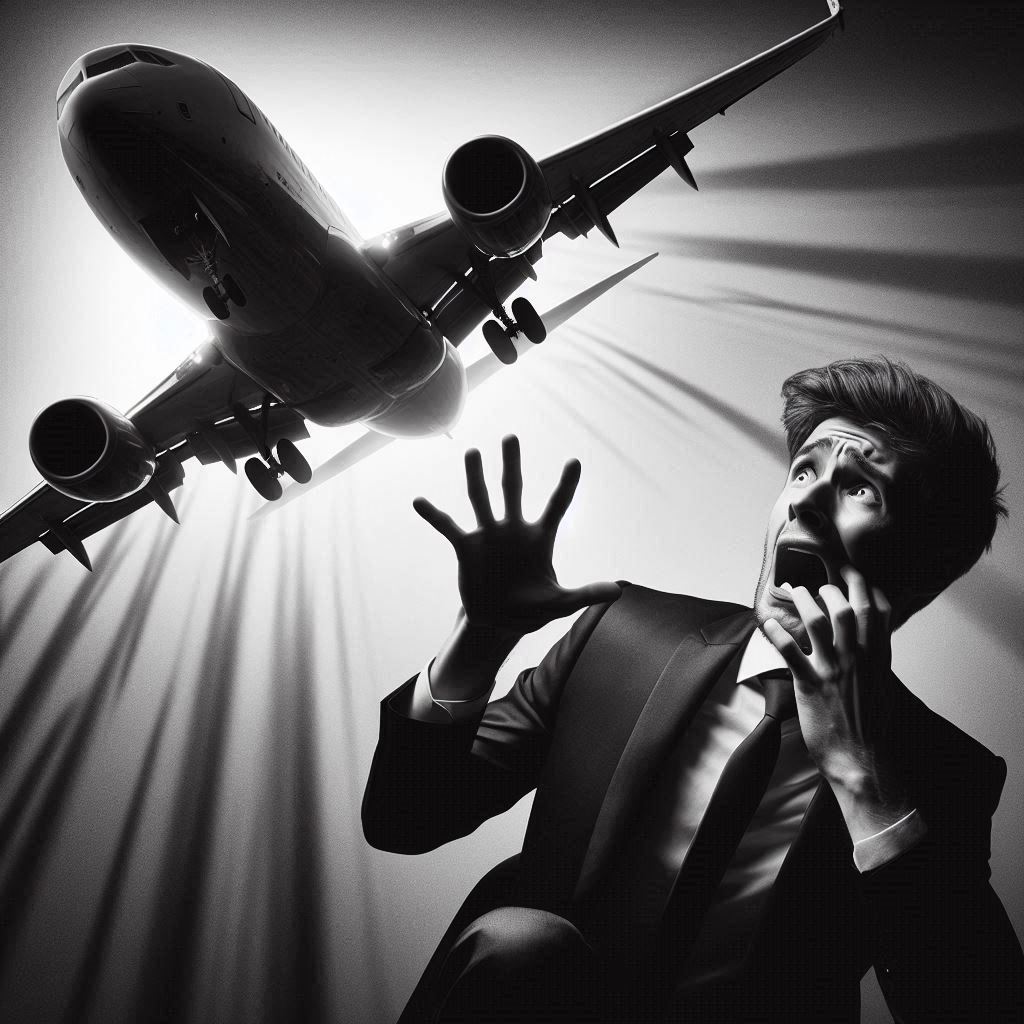Many individuals experience an overwhelming sense of confinement when in public spaces, be it in a crowded subway or an open park. This feeling can escalate into severe anxiety, or even agoraphobia, affecting one’s mental health and well-being. Understanding why these feelings arise and how to manage them is crucial for reclaiming your sense of freedom and peace of mind. We’ll delve into common scenarios that trigger this sensation and offer practical strategies to help you cope and feel at ease in public spaces.
Understanding the Feeling of Being Trapped in Public
Feeling trapped in public spaces can stem from various psychological factors that affect individuals differently. Understanding the underlying reasons behind this sensation is crucial to address and manage these emotions effectively.
Social Anxiety in Public Spaces
Social anxiety can significantly contribute to the feeling of being trapped in public settings. Individuals experiencing social anxiety may fear judgment, scrutiny, and negative evaluation from others in social situations. The pressure to engage in interactions with strangers or unfamiliar individuals can amplify feelings of being trapped, leading to increased discomfort and unease.
Social anxiety often manifests in public spaces where individuals feel exposed to the perceived scrutiny of others. The fear of making mistakes or being negatively judged can make public environments feel suffocating and overwhelming. It is essential to recognize the impact of social anxiety on one’s perception of public spaces and seek strategies to cope with these feelings effectively.
For additional insights on managing social anxiety in public spaces, refer to articles like When everyday environments become anxious spaces and Tips for Managing Anxiety While in Public.
Claustrophobia and Its Impact
Claustrophobia, the fear of enclosed spaces and crowded environments, can intensify the sensation of being trapped in public. Individuals with claustrophobia may experience heightened anxiety and distress in settings with limited space or dense crowds. The feeling of confinement and the inability to easily escape can trigger intense feelings of panic and discomfort.
In public spaces, claustrophobia can exacerbate the sense of being trapped, making individuals feel constricted and vulnerable. Recognizing the impact of claustrophobia on one’s emotional well-being is crucial in developing coping mechanisms to navigate public environments more comfortably.
For more information on managing panic disorder and claustrophobia in public places, consider exploring articles such as 6 Tips for Dealing With Anxiety in Public Places and Agoraphobia – Symptoms and causes.
Sensory Overload and Overstimulation
Sensory overload can overwhelm individuals in public places, leading to a sense of feeling trapped and disoriented. Public environments often bombard our senses with excessive stimuli, such as loud noises, bright lights, and crowded spaces, triggering sensory sensitivities and overstimulation.
The effects of sensory overload on mental health can be profound, causing anxiety, irritability, and emotional distress. Individuals sensitive to sensory stimuli may find public spaces challenging to navigate, as the overwhelming sensory input can disrupt their sense of control and comfort.
Understanding how sensory overload contributes to the feeling of being trapped in public is essential for implementing coping strategies to manage sensory sensitivities effectively. By recognizing the signs of overstimulation and developing techniques to regulate sensory input, individuals can better navigate public environments and alleviate feelings of being trapped.
For comprehensive insights on sensory overload and mental health, consider exploring resources on Managing Anxiety While in Public and Social Anxiety Disorder: Symptoms, Tests, Causes &.
Coping Strategies for Dealing with Feeling Trapped
Feeling trapped in public spaces can be overwhelming, but there are coping strategies that can help manage these emotions effectively. Here are some practical techniques to alleviate the sensation of being trapped:
Deep Breathing and Grounding Techniques
Deep breathing exercises and grounding techniques can be powerful tools in reducing anxiety and creating a sense of safety in public surroundings. When you feel overwhelmed, try taking slow, deep breaths to calm your mind and body. Grounding techniques, such as focusing on the present moment by describing your surroundings in detail, can help shift your attention away from feelings of being trapped and towards the environment around you.
For more information on the benefits of deep breathing and grounding exercises, check out this resource.
Gradual Exposure and Desensitization
Gradual exposure and desensitization involve facing your fears in a controlled manner to build tolerance and reduce the feeling of being trapped. Start by exposing yourself to mildly challenging situations and gradually work your way up to more demanding environments. This gradual approach can help desensitize you to triggers that cause feelings of confinement and increase your comfort level in public spaces.
Learn about the effectiveness of gradual exposure techniques in managing claustrophobia from this source.
Seeking Professional Help and Support
Seeking professional help, such as therapy or counseling, is crucial for individuals experiencing severe distress in public spaces. A mental health professional can provide guidance, support, and specialized interventions to help you navigate and cope with your feelings of being trapped. Remember, reaching out for support is a sign of strength and can make a significant difference in your well-being.
Discover the importance of seeking therapy for agoraphobia in this insightful article.
By incorporating these coping strategies into your daily routine, you can better manage and alleviate the sensation of feeling trapped in public spaces. Remember, it’s essential to prioritize self-care and seek help when needed to support your mental health and well-being.
Creating Safe Spaces and Building Confidence
Public spaces can sometimes evoke feelings of entrapment or unease, causing distress and anxiety. Establishing a sense of safety and confidence is crucial for navigating such situations. Here are strategies to create safe spaces and enhance self-assurance:
Identifying Safe Exits and Exit Strategies
One way to mitigate feelings of entrapment in public spaces is by familiarizing yourself with the environment and identifying safe exit routes. Knowing where exits are located and how to access them can instill a sense of control and preparedness. When entering a new place, take a moment to scan your surroundings and locate emergency exits. Understanding exit signs and evacuation routes can provide reassurance and a plan of action in case of an unexpected event. You can refer to resources like the Emergency Exit Routes Factsheet to learn more about the importance of exit routes in ensuring safety.
Self-Affirmations and Positive Visualization
In addition to physical strategies, adopting mental techniques like self-affirmations and positive visualization can also bolster confidence in public settings. Self-affirmations involve repeating positive statements about oneself to challenge negative thoughts and boost self-esteem. Affirmations such as “I am capable” or “I am safe” can help reframe your mindset and build resilience when feeling overwhelmed in public spaces. Positive visualization, on the other hand, entails picturing yourself navigating public situations with ease and confidence. By mentally rehearsing scenarios where you feel empowered and in control, you can cultivate a sense of assurance and reduce the sense of entrapment. Consider exploring methods to establish comfort zones and enhance your self-assurance when faced with challenging environments.
Building Resilience and Overcoming Challenges
Resilience is the key to overcoming challenges that may arise when feeling trapped in public spaces. By embracing specific strategies, individuals can develop the strength to navigate stress and uncertainties effectively.
Mindfulness and Stress Management
Engaging in mindfulness practices can significantly contribute to managing stress levels induced by public environments. Mindfulness involves being present in the moment, acknowledging thoughts and feelings without judgment. Techniques such as deep breathing exercises, meditation, or mindful walking can help calm the mind and reduce the impact of external stressors. Research has shown that mindfulness can improve mood, reduce anxiety, and enhance overall well-being, making it a valuable tool in building resilience against public-induced stress (source).
Setting Realistic Goals and Celebrating Progress
Setting achievable goals is a fundamental aspect of resilience-building. By breaking down larger challenges into smaller, manageable tasks, individuals can create a sense of accomplishment with each step taken. Celebrating even the smallest victories along the way boosts confidence and motivation, reinforcing the belief in one’s ability to tackle public obstacles. Recognizing progress, no matter how minor, serves as a reminder of personal strengths and resilience. It’s about the journey, not just the destination. This mindset shift can empower individuals to face public challenges with a positive outlook, knowing that every step forward is a triumph in itself (source).
By incorporating mindfulness practices for stress management and adopting a goal-oriented approach with a focus on progress, individuals can strengthen their resilience and navigate public spaces with greater ease and confidence.
Key Takeaways
When feeling trapped in public, it’s crucial to remember that you are not alone in experiencing these emotions. Here are some key takeaways to keep in mind:
Acknowledge Your Feelings
It’s okay to feel overwhelmed or trapped in public spaces. Recognizing and acknowledging these emotions is the first step towards managing them effectively.
Practice Deep Breathing Techniques
Engaging in deep breathing exercises can help calm your mind and body when you start to feel trapped or anxious in public. Focus on your breath to center yourself in the present moment.
Seek Support from Loved Ones
Don’t hesitate to reach out to friends or family members for support when you feel overwhelmed in public. Having someone to talk to can provide comfort and reassurance.
Identify Triggers
Try to pinpoint what triggers your feelings of being trapped in public. Once you understand the triggers, you can work on coping strategies to navigate those situations more effectively.
Create an Exit Plan
Having an exit plan in place can help alleviate feelings of being trapped. Knowing that you have a way out can provide a sense of control in challenging situations.
Practice Self-Compassion
Be kind to yourself and practice self-compassion. Remember that it’s okay to feel vulnerable at times and that you deserve kindness and understanding, both from yourself and others.
Consider Seeking Professional Help
If feelings of being trapped in public persist and significantly impact your daily life, consider seeking support from a mental health professional. Therapy can provide valuable tools and strategies for managing anxiety and feelings of confinement.
Navigating feelings of being trapped in public can be challenging, but with self-awareness, support, and coping strategies, it is possible to work through these emotions and reclaim a sense of security and comfort in various environments. Remember that your well-being is important, and it’s okay to prioritize your mental health.
Conclusion
Addressing feelings of entrapment in public spaces is crucial for mental well-being. Recognizing these emotions early and implementing effective coping strategies, like mindful breathing, can prevent escalation. Seeking professional support can also provide valuable tools for managing these experiences. Prioritizing mental health ensures a more confident and comfortable interaction with the world.








